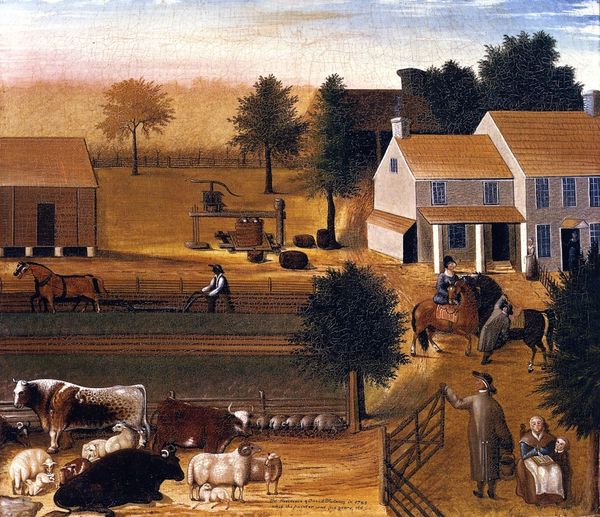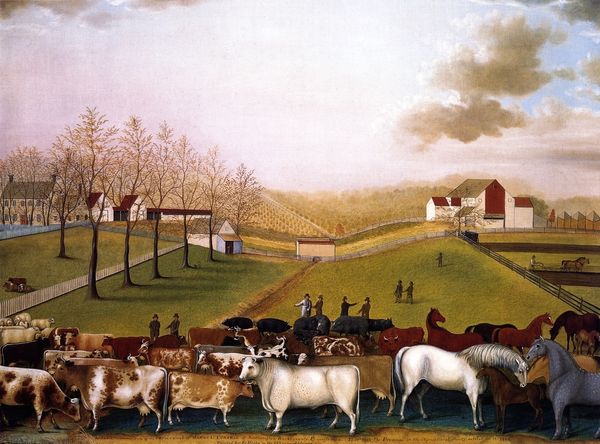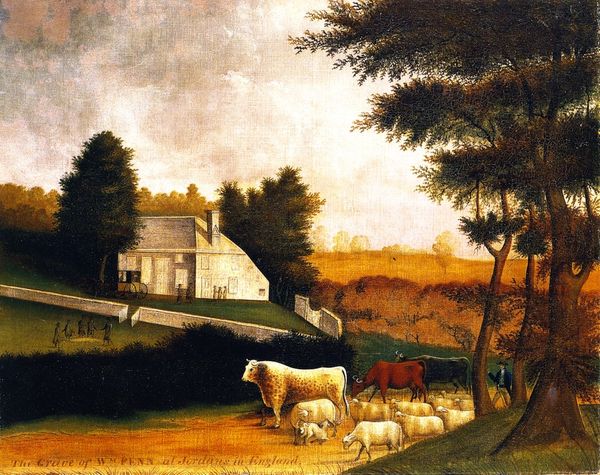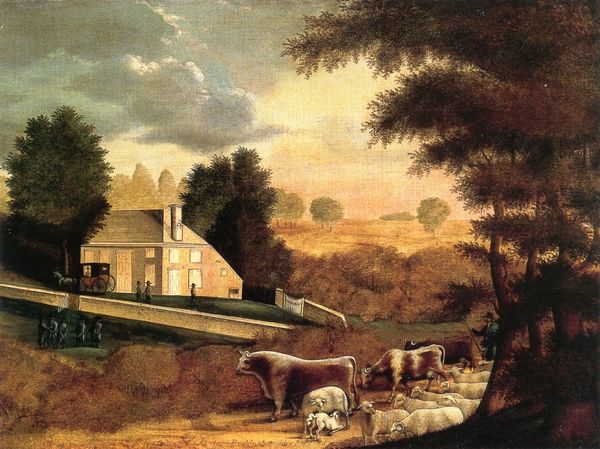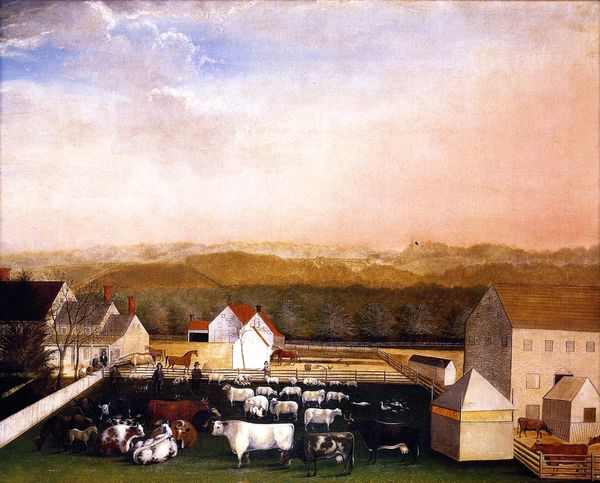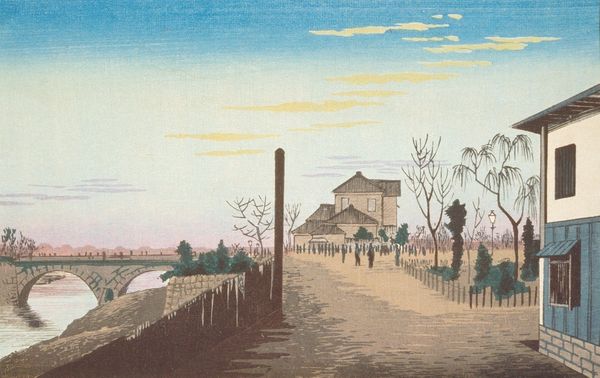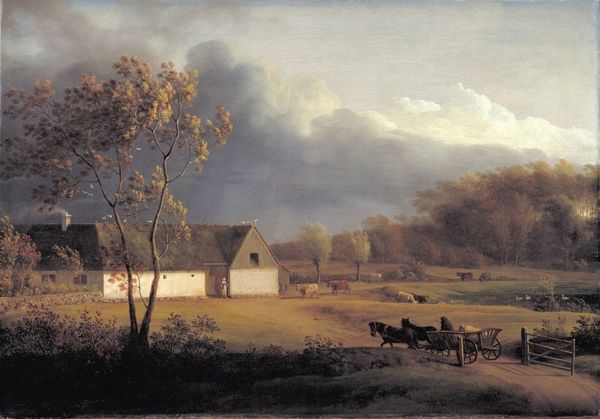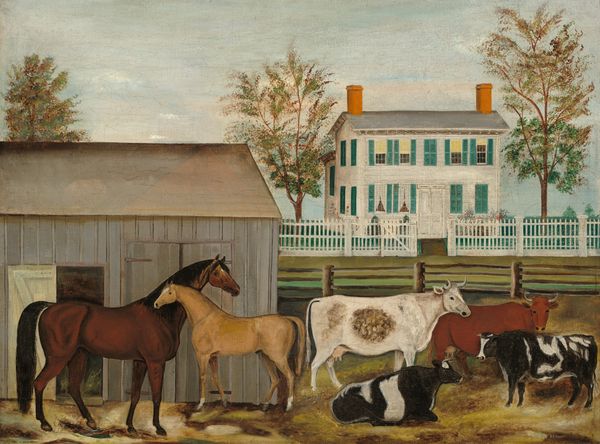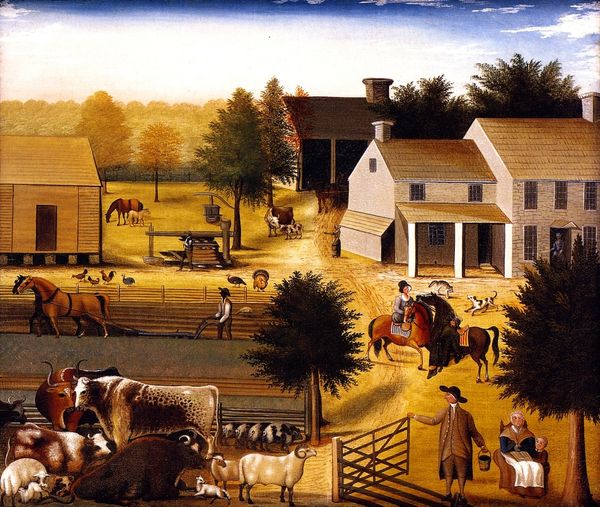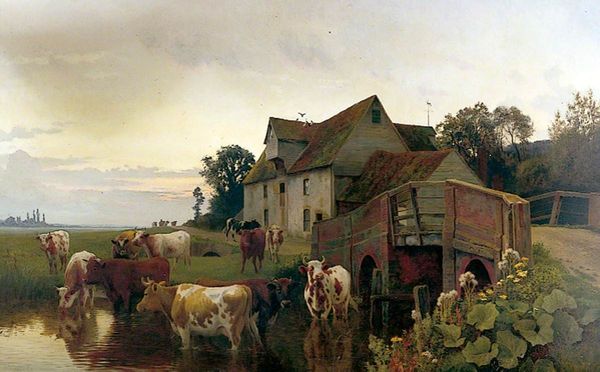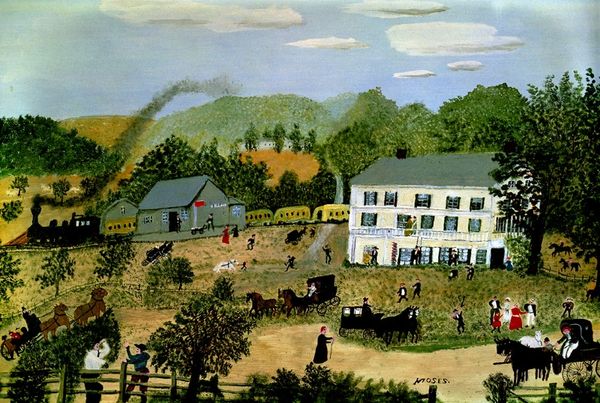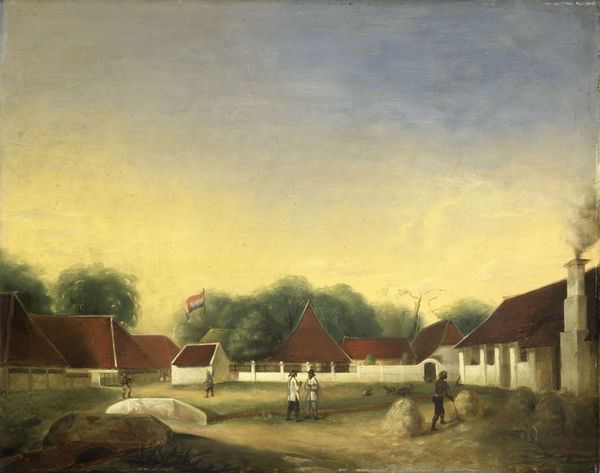
painting, oil-paint
#
rural-area
#
painting
#
oil-paint
#
landscape
#
figuration
#
oil painting
#
romanticism
#
genre-painting
#
history-painting
#
academic-art
#
regionalism
#
realism
Copyright: Public domain
Editor: We're looking at Edward Hicks's "Residence of Thomas Hilborn," painted in 1847, an oil painting depicting a farm. It has a sort of naive charm, almost like a folk-art rendering of rural life. How do you interpret this work? Curator: Well, beyond the immediate charm, I see a layered commentary on labor, land ownership, and perhaps even the myth of the American pastoral ideal. Hicks was a Quaker, and his faith deeply influenced his art. Do you notice the detailed depiction of different forms of labor—the plowing, the tending to animals, the domestic scenes? Consider whose labor is being valorized and whose might be erased. Editor: I see what you mean. It seems to show a balanced, idealized view of work. The focus is on a white family; it prompts the question: whose stories aren't being told here? Curator: Exactly! That absence is critical. Ask yourself, who historically benefited from this pastoral landscape? Whose backs built these farms? Where is the acknowledgement of Indigenous dispossession, or the reliance on enslaved labor that underpinned much of early American agriculture? This painting offers a romanticized view, but by acknowledging its omissions, we can begin a more critical dialogue about history. It is a view, or a vision, in a specific context that favors some to others, at a specific point in time. Editor: So, understanding what's *not* shown is just as important as what *is*? Curator: Absolutely. By juxtaposing the idyllic surface with the realities of the time, we can unpack the complex, and often contradictory, narratives embedded in American art. We see through rose-tinted glasses. Editor: I hadn't thought about it that way. It really opens up the painting to a much deeper conversation about American history. Curator: Indeed. Art is never created in a vacuum. Questioning its context is an ongoing, ever necessary process.
Comments
No comments
Be the first to comment and join the conversation on the ultimate creative platform.
